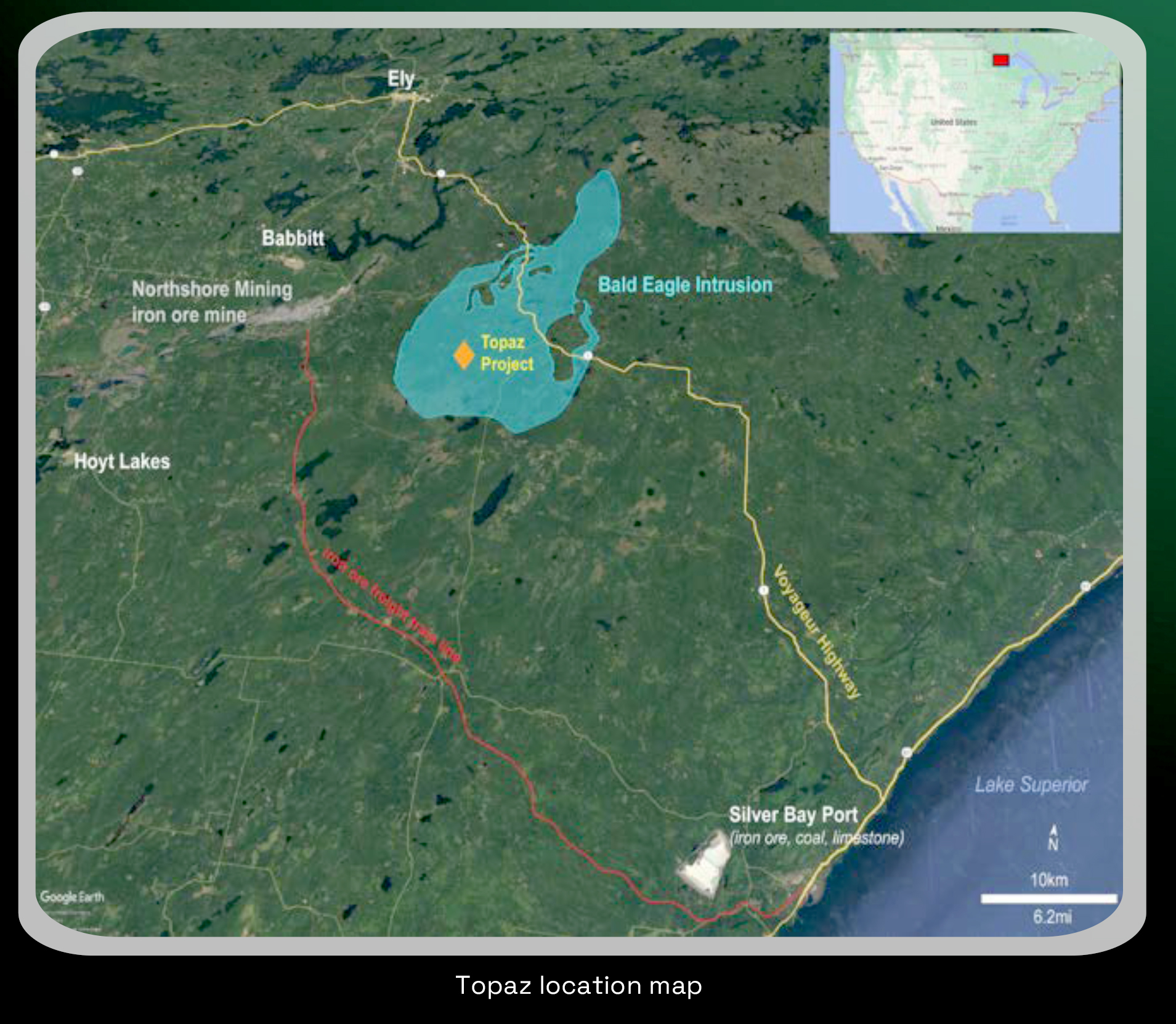Major helium deposit discovered

by Parker Loew
A new mining project is rising south of Birch Lake that could put the area on the map, this time for helium mining.
Pulsar Helium plans on drilling in February off the Dunka River Road in the hopes of discovering a helium honey hole.
The story begins in 2011, when Phil Larson, now project advisor for Pulsar Helium, was working with a copper-nickel exploration program doing test drills near Babbitt.
“One day, we hit a gas pocket, a pressurized gas pocket. It was a lot of pressure and blew the core tube out of the drill stream,” said Larson. “The gas flowed for four or five days while we were carefully trying to figure out exactly what we were dealing with.”
Initially, there was concern the gas pouring out of the hole was explosive, but that didn’t turn out to be the case.
The exploration team was able to fill the hole back in after five days, but not before collecting a few small samples of the gas.
There was no pressure change of the gas pouring out of the drill hole over those five days.
“We walked away from the hole as it was not part of what we were targeted or even had a lease to do,” said Larson.
The crew didn’t think much about it until the tests came back with composition reports for the gas.
The gas was a mixture of carbon dioxide, nitrogen, methane, and helium.
A test result of 10.5% helium to be exact. Experts say this level is much higher than other deposits.
“At the time, we were just kind of scratching our heads, not appreciating what that meant,” said Larson.
There has been only two other documented cases of 10% helium in a gas pocket in North America.
“Only after the hole was sealed we started reviewing the information and realized, ‘Oh, wow, that actually is, that’s pretty high. There is potentially something there.’”
Currently, most helium is extracted as a byproduct of gas production and usually accounts for less than 1% of the composition of these gas mixtures.
There are only a handful of helium explorers looking for primary helium sources, and there is a developing helium shortage in the US and globally which has led to massive price increases with no signs of stopping.
The shortage has gotten to a point the federal government has been winding down its strategic helium reserve.
A pocket of gas yielding 10.5% helium would be historic.
“It is one of the highest helium concentrations ever reported in a naturally occurring gas,” said Larson. “This is potentially a world-class discovery.”
The first step in Pulsar Helium’s plan to mine helium is to re-drill the hole filled in in 2011 and do a proper test to see what the reservoir is and give them an idea of
the size of the pocket is.
“We won’t know until we drill the borehole,” he said.
Over the last year, Pulsar Helium has been preparing for the appraisal drill and has done construction on Dunka River Road to accommodate the drill rig they are bringing in.
The rig is “something probably unlike anything that’s ever been seen up here. This is not a little diamond rig that’s used for drilling a couple hundred feet of taconite,” Larson said.
While Pulsar Mining is hopeful everything goes as planned, they are ready for many scenarios.
“We’re preparing to make sure that if we run into unexpected conditions, we have the equipment on site that’s able to contain and control that,” he said.
They also have planned what they will do with the other gases in the pocket that aren’t helium.
The nitrogen in the hole can be safely vented to the atmosphere, and if the carbon dioxide in the hole is high purity, they can process and sell it, as there is demand.
“It’s what makes your beer fizzy,” said Larson. “This has the potential to be a food-grade carbon source.”
Pulsar Helium, now listed on the Toronto Stock Exchange, has raised $3 million dollars in support primarily of drilling this appraisal borehole near Babbitt.
“This type of endeavor is not cheap, so it’s kind of a testament to the potential of the project that it’s been relatively seamless in raising capital in what’s overall a pretty tight market,” Larson said.
The amount of land needed to do helium mining is very small and is non-invasive.
The drill pad, which has been permitted and approved by Lake County and is close to being constructed, is about two acres in size.
What they will hopefully be mining is a gas and not a solid, and since helium is less dense than air, the gas should come out of the hole on its own.
“There wouldn’t be any waste rock piles or anything like that,” he said. “When the project is done, the casing is pulled, the hole is sealed, the pad is regraded, reseeded, and that’s it.”
While they are approved to go ahead with the appraisal borehole, they will need to acquire a commercial use permit from Lake County if they find a large, rich source of helium and want to mine it.
A find like that could bring millions of dollars to the region, and would be of strategic importance for the USA.
Pulsar anticipates people will be interested in visiting the site, and will soon coordinate site visits from the public.














